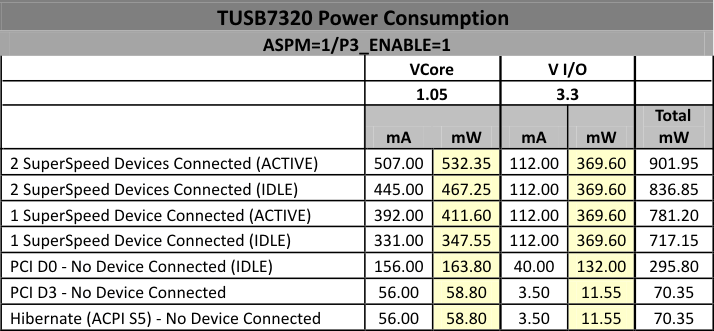SLLU149E June 2011 – February 2016 TUSB7320 , TUSB7340
- TUSB73x0 Board Design and Layout Guidelines
- 1 Typical System Implementation
- 2 Power
- 3 Device Reset
- 4 General High Speed Layout Guidelines
- 5 USB Connection
- 6 Package and Breakout
- 7 PCI Express Connection
- 8 Wake from S3
- 9 Device Input Clock
- 10JTAG Interface
- 11Differential Pair ESD Protection
- 12SuperSpeed Redriver
- 13SMI Pin Implementation
- 14Schematics
- Revision History
2.1 Overview
See Achieving_Lowest_Power_with_TUSB73X0.pdf for more information on the settings used to get these low power numbers.
 Figure 2-1 TUSB7320 Power Consumption
Figure 2-1 TUSB7320 Power Consumption  Figure 2-2 TUSB7340 Power Consumption
Figure 2-2 TUSB7340 Power Consumption